A fuse box or circuit breaker is the center of your home’s electrical system. It diverts the electricity from your utility company to all parts of your home. It also provides protection from overload, short circuit or ground fault by turning off the power when wires become too hot.
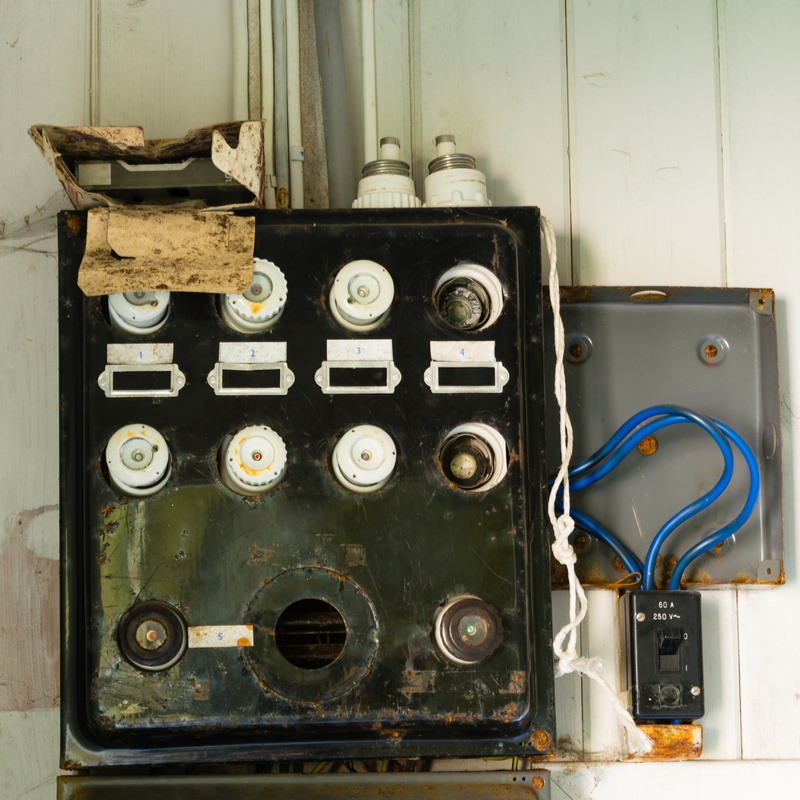
Most homes use circuit breakers. You can find them in your service panel box which is usually located in the basement. If your home was built before 1960 and your electrical system hasn’t been updated, you may have a fuse box instead. While both systems essentially perform the same function, there are reasons most homes upgrade to circuit breakers.
The Difference Between a Fuse and a Circuit Breaker
Determining whether you have fuses or circuit breakers in your home is easy. Locate your service panel – that’s the metal box containing your electrical circuits – and open it up.
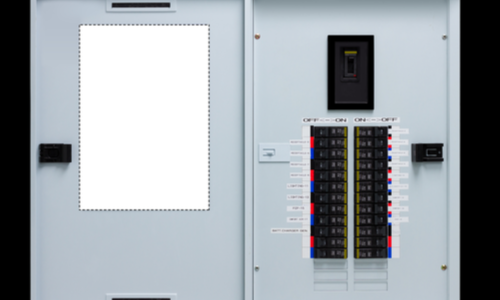
When you open the door, you’ll see rows of either circular plugs or rectangular switches. If you have plugs – which look like the end of a lightbulb – you’ve got fuses. If you see a column of switches, you’ve got circuit breakers.
How Fuses and Circuit Breakers Work
Circuit breakers and fuses both serve the same function: to protect your electrical system from overloading and causing a fire. The difference is how they each achieve this.
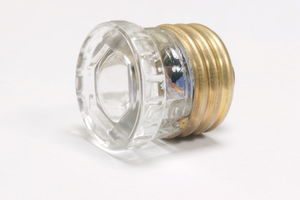
Fuses. Those little plugs you see have a filament inside of them that will melt if the circuit gets too hot. When that filament melts, electricity is no longer able to travel to that circuit until you replace the “blown” fuse. You can see the filament through the clear window at the top of the plug and identify if it’s melted or not. A cloudy window is a sign of a blown fuse.
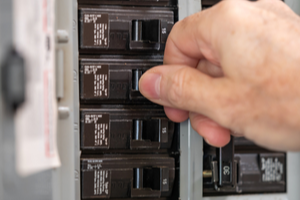
Circuit breakers are electromagnetic on/off switches that control the current to each circuit in your home. When a circuit draws too much power and overloads, the switch receives the surge first and flips off or “trips.” Normally you can unplug whatever overloaded your circuit and simply flip the power back at the tripped circuit breaker.
The Pros and Cons of a Fuse Box vs Circuit Breakers
It’s generally agreed that an old fuse box should be replaced with circuit breakers. While fuses worked well for a time, circuit breakers are more convenient and can handle higher electrical loads more safely. These days, most families run multiple devices that require more amperage. If you are considering fuse box replacement, it’s a great time to beef up your home’s electrical capabilities.
If you have an electric fuse box and a fuse blows, you’ll need to replace it with a new one. That may mean a trip to the hardware store. It also means unplugging everything in the circuit, standing on a rubber mat and making sure you’re replacing the blown fuse with the proper type. Different fuses are rated for different amperage. If you introduce a 20-amp fuse to a 15-amp circuit, it may try to draw more power than it can handle and you risk fire.
My Circuit Breaker Keeps Tripping, Why?
Hopefully, we’ve made a strong case for upgrading from a fuse box house to a circuit breaker house. The benefits certainly outweigh the disadvantages but that’s not to say that circuit breakers have their own quirks. Sometimes a circuit keeps tripping. Here are the possible reasons why:
A worn out breaker. Normally, when a circuit in your home trips, you simply find the offending switch in your service panel, flip it all the way “off” and then all the way “on.” If you have a circuit that keeps tripping regularly, you may need to replace it. Circuits that trip a lot do wear out. Remember, circuit breakers are there to protect you. If it continues to trip, it may indicate another issue.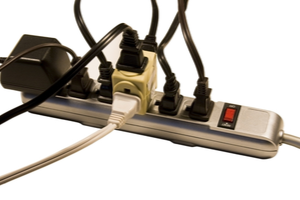
An Overloaded circuit. The circuit connected to that breaker may have too many outlets or fixtures plugged into it drawing power. A professional electrician can diagnose the problem and rewire or add circuits if needed so that you receive enough electricity without overloading.A Short circuit or ground fault. Other reasons a circuit keeps tripping are a short circuits or a ground faults. These are similar issues where moisture or loose wires create a hazardous electrical connection. A mouse inside the wall may have chewed your neutral wire allowing it to come in direct contact with your hot wire. Or an appliance may have gotten wet allowing the hotwire and the ground to connect via moisture. You can test for these by unplugging everything in the circuit, flipping it back on and reintroducing items one at a time. If you plug an item in and the circuit trips again, you’ve most likely identified the problem.
While it’s possible to diagnose these electrical problems on your own and even replace your circuit breaker yourself, electrical work is dangerous. Having a trusted professional perform the work ensures that it gets done safely and properly.
Get Expert Advice on Fuse Boxes, Circuit Breakers and More
If you live in the Los Angeles metro area and you have outdated fuses, circuits that continually trip or want to know how you can upgrade the electrical in your home, give us a call. You can also contact us online to schedule your service.
The post Fuse Box vs Circuit Breaker appeared first on Mike Diamond Services.
Did you miss our previous article…
https://www.ab-sessions-plumbing-building-services.com/?p=512
